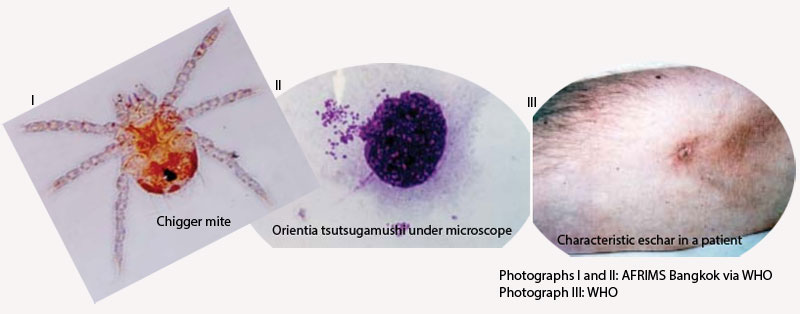Scrub typhus infections on the rise
Kathmandu, August 19
A total of 168 people have tested positive for scrub typhus in the last seven and a half months across the country. Three patients — two from Syangja and one from Nawalaparasi — have succumbed to the disease.
Of the 168 patients who tested positive, 105 (67 male and 38 female) are from Chitwan. Scrub typhus have been reported in 27 districts across the country since January 2017, according to Dr Guna Nidhi Sharma, section chief for epidemiology at Epidemiology and Disease Control Division, Teku.
Scrub typhus cases are increasing in Chitwan. In 2016, 509 patients had tested positive for the disease. “Infected chiggers are specifically found during the wet season in the dense areas of scrub vegetation which is when the mites lay their eggs. Areas like forest clearings, riverbanks, and grassy regions provide favourable environment for infected mites to thrive,” said Dr Anup Bastola, consultant physician at STIDH. Scrub typhus was first reported in the country in 2015. In that year, 101 people from 16 districts had tested positive for scrub typhus. Of them, eight succumbed to the disease. In 2016, 831 people from 14 districts tested positive for the disease. Of them, 14 died.
Scrub typhus, also known as tsutsugamushi disease, is an infectious illness caused by Orientia (Rickettsia) tsutsugamushi and is transmitted to humans and rodents by the bite of the larva of trombiculid mites (chigger).
The mites are both the vector and reservoir of the disease. The mite is very small and can only be seen through a microscope or magnifying glass.
“The larva is the only stage that can transmit the disease to humans and other vertebrates. The disease is transmitted from mites to rats. Mice and the mites in their larval stage contract the disease by biting these rodents,” informed Dr Bastola. However the disease is not directly transmitted from person to person. Human beings of all ages, including children, are affected by it.
Anyone with symptoms like high fever, chills and rigour, headache, red lesion or sore on the skin at the site of the bite, cough and rashes are suggested to visit hospitals.






